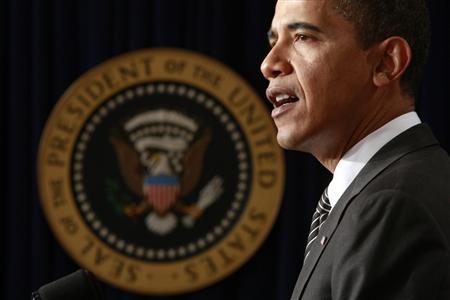President Barack Obama released a final version of a rule forcing car manufacturers to double average fuel economy by 2025 that includes changes benefiting makers of alternative-fuel vehicles.
“By the middle of the next decade, our cars will get nearly 55 miles per gallon, almost double what they get today,” Obama said today in an e-mailed statement. “It’ll strengthen our nation’s energy security, it’s good for middle class families and it will help create an economy built to last.”
Corporate average fuel economy, or CAFE, rules released last week and that will take effect later this year are supposed to reduce US oil consumption by 12 billion barrels and lead to fuel savings of more than $8,000 by 2025 over the life of a vehicle, the White House said.

Boosting average fuel economy is part of Obama’s plan to reduce oil imports and use. Promoting purchases of more fuel-efficient vehicles can help reduce the use of fossil fuels.
The Environmental Protection Agency and National Highway Traffic Safety Administration released the proposed rule for model years 2017 to 2025 in November after reaching an agreement with car manufacturers on the outline in July 2011. Auto executives from companies including General Motors, Ford, Chrysler and Hyundai stood with Obama at the Washington Convention Center to tout the agreement, which was the basis for the final rule.
The proposed rule granted incentives to plug-in electric and plug-in electric-hybrid vehicles, with the final rule adding natural-gas-powered cars to that list. Honda sells vehicles powered by natural gas.

German car manufacturers Daimler and Volkswagen didn’t sign agreements, saying the plan gave an advantage to light trucks, primarily made by US manufacturers. Honda, which signed the agreement, made similar assertions in e-mails.
Consumers have been slower to embrace electric vehicles than car manufacturers had hoped for, in spite of a $7500 US tax credit for buyers. Customers bought fewer Chevrolet Volts and Nissan Leafs than was produced in 2011, the first year of US sales of plug-in electric vehicles made by mass-market manufacturers.
The new standards give car manufacturers flexibility in how to meet them and result in different improvement targets among car manufacturers. While they will require fuel-economy increases, because of the way the rule is structured and credits it offers car manufacturers, buyers won’t see fuel-economy gains of that scope on window stickers.
The fuel component of the rule will require an average of 4.74 litres per 100kms for car manufacturers’ fleets by 2025, while the corresponding carbon dioxide-emissions requirement will yield 4.31litres per 100kms.
Regulators can levy fines on car manufacturers who don’t meet the requirements, which are based on vehicles that consumers buy rather than the fleet produced by the manufacturers.

